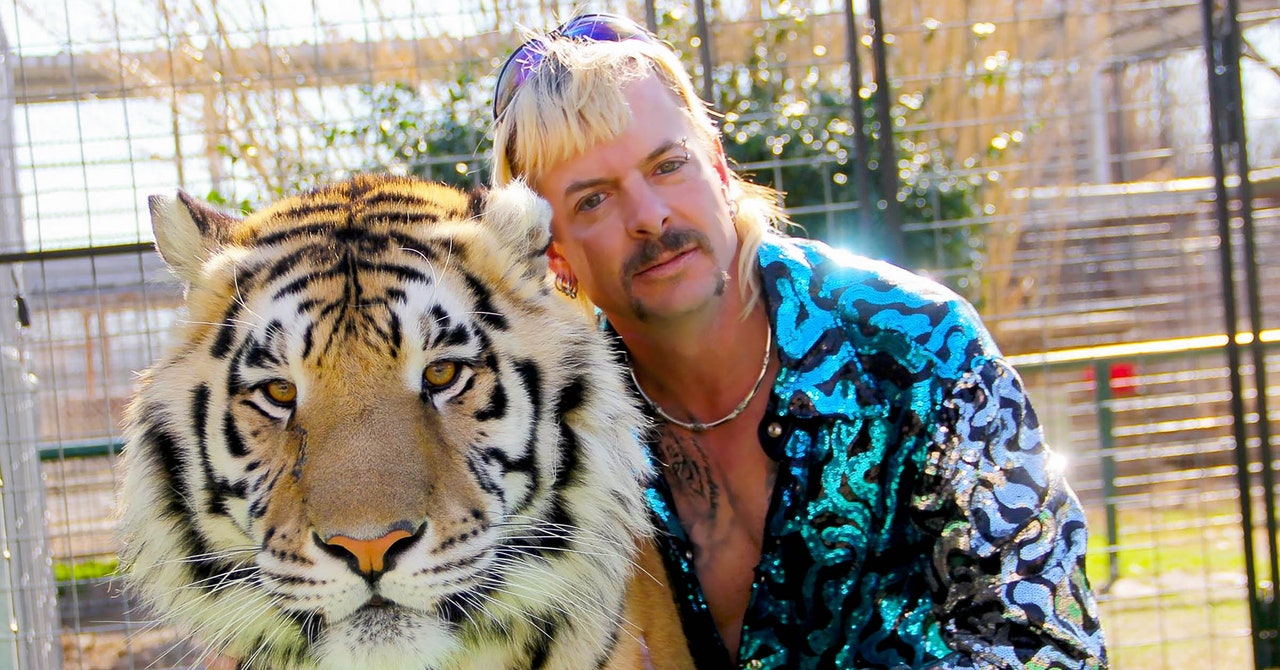Over the past week, as countless stressed-out people have found themselves cocooned on their couches with a Netflix subscription and no place to go, one miniseries has grabbed viewers more than others: Tiger King: Murder, Mayhem, and Madness. Twitter these days is largely dominated by the coronavirus pandemic, but in the moments when people’s attention shifts to pop culture, it shifts to this seven-part documentary and its cast of compelling characters. But if the online chatter makes it sound more zany than sinister, don’t be fooled. It is a brutal and sickening binge.
For anyone who has seen the memes but doesn’t yet know the story, Tiger King outlines how the man born Joseph Schreibvogel, a flamboyant Oklahoma-based roadside zookeeper best known as “Joe Exotic,” wound up in federal prison after an attempted murder-for-hire scheme. Directors Eric Goode and Rebecca Chaiklin originally intended to make a documentary about the world of venomous snake trading but changed gears after discovering Joe, who is a documentarian’s dream—garrulous, self-mythologizing but not self-aware, with imploring eyes that pop on camera and a personal life as chaotic as his professional one.
Joe’s outfits are very Lisa Frank, all sequins and neon, but his milieu is more Flannery O’Connor, a parade of Southern grotesques whom he embraces as fellow outcasts. His story is baroquely weird from the outset and gets weirder still, with more polygamy, lip-syncing, and gubernatorial politicking than the average true-crime yarn. There’s a side plot about search-engine optimization and a side plot about the goings-on at an entirely different zoo. Every episode of the documentary contains a bounty of mesmerizingly odd details, from the way one of Joe’s loyal employees explains that he lost both legs in a tragic zip-lining accident and the way Joe’s former producer casually mentions how he lit himself on fire during his previous career in stunt journalism to the “Property of Joe Exotic” tattoo one of Joe’s husbands has on his pelvis. But for all of the kooky moments, the story’s central contours are plainly awful—a

